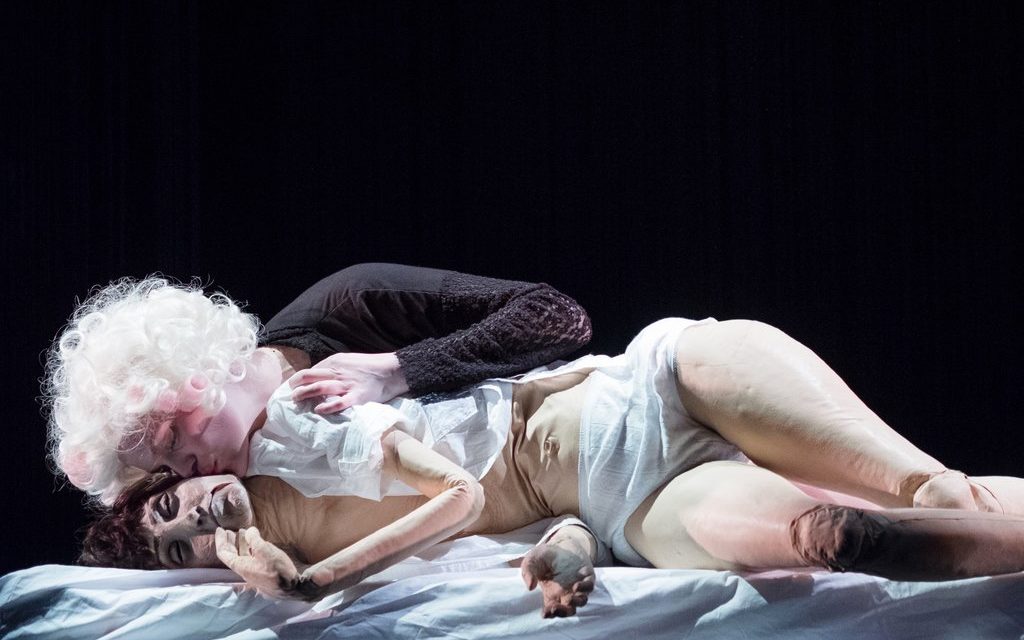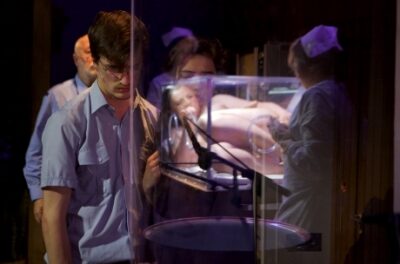Norwegian puppeteer Yngvild Aspeli and her company Plexus Polaire based in France is touring the United States in January 2019 (New York and Chicago) with her latest creation Chambre Noire. Then in March, Chambre Noire will visit Atlanta. Yngvild Aspeli will visit New York again with Cendres (Ashes)–a hit of the Chicago International Puppetry Festival in 2017–which is to end in Canada during summer.
We sat with Yngvild who answered our questions.
Nicole: You trained at the prestigious puppetry school (École Nationale superiéure des Arts de la marionette, ENSAM) in Charleville Mézière. Could you tell us what led you to be a puppeteer, your training at ENSAM, the most memorable moments, and how you have developed your craft as a puppeteer?
Yngvild: I trained as an actress at the École Jacques Lecoq in Paris before I entered ESNAM and I always loved the part of the training where we worked with masks and costumes; inventing creatures and strange bodies. Ever since I was a child, I have always made and created things: drawing books, sculptures, and clothes. As puppetry is both an expression of visual art and theatre, I saw the possibility of developing a work of visual storytelling where both expressions could co-exist. During the three years at ESNAM, I had the chance of encountering a large number of inspiring artists with different skills, styles, and ways of working within the vast world of puppetry, as well as developing my own artistic expression.
Nicole: You speak of your productions more like multidisciplinary and devised theater working with musicians, lights designer, etc. Could you describe your creative approach with the collective of artists you work with? For example for Chambre Noire?
Yngvild: When making a performance, I work on how to translate the text into a visual language, how to transform the story into a physical experience, where some things are understood by the text, other things felt by an image, or sensed through the music. The use of life-sized puppets is at the center of my work, but the role of the actor, the presence of the music, the use of light and video, are all equal elements in communicating the story. I’m interested in the expanded language that is created in the meeting point of these different expressions. In order to do this, the artistic team is active throughout the process, as the shows are developed “on the floor,” through numerous improvisations based on images, situations or atmospheres that I would like to capture.
Nicole: The human-size puppets in Chambre Noire and Ashes are often representing a realist image of a person. On stage, your body and the puppet are often one or a character with many facets. Could you describe the relation, the dialogue as an actor but also the operator of an unanimated object in your hands?
Yngvild: The relationship between the actor and the puppet are central in my work, and I am especially interested in the space that appears when the two different levels of presence meet; to encounter the confusion, the uncanny feeling, that is created when the puppet – which is a dead object – becomes more alive than the actor who animates it. To somehow move the “center” out of ourselves. When the roles are reversed, and we no longer know who controls whom, we can play with life and death, and look closer at how human beings are controlled by invisible forces around, or inside, themselves.
Being an actress while controlling a puppet is complex but passionate. It demands a lot of hard work and a bit of madness, as you need to have total technical control and at the same time have to let yourself be embodied in the story.
Nicole: And last, what is your next adventure?
Yngvild: I am working on a new show, which will premiere in 2020, based on Herman Melville’s Moby Dick. A visual voyage featuring six actors, twenty puppets, video-projections on smoke, an octobass, and a whale-sized whale.
This interview was originally published in French Culture on December 2018 and has reposted with permission.
This post was written by the author in their personal capacity.The opinions expressed in this article are the author’s own and do not reflect the view of The Theatre Times, their staff or collaborators.
This post was written by Nicole Birmann Bloom.
The views expressed here belong to the author and do not necessarily reflect our views and opinions.


















